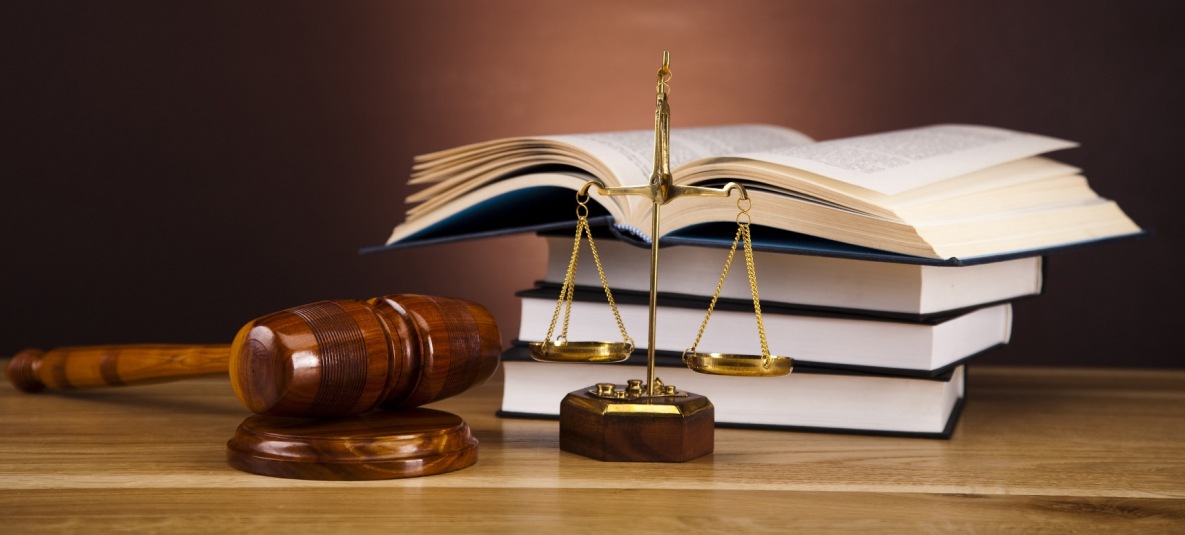According to Joel Schwartz (1993), under Moses, subsidized housing projects had racial overtones. In Brooklyn, gentrification has recently acquired a racial dynamic as whites are moving to African American neighborhoods that they had previously abandoned and in the process are undermining the housing chances of Black people. Some have stuck around for. Geographers and other social scientists have discovered that since the 1970s, a few Black neighborhoods experienced gentrification pressures and that the gentrifiers were usually middle-class African Americans (Boyd 2008; Moore 2009; Pattillo 2007). At the time, I thought that these concerns were exaggerated, because there were very few whites in the eastern parts of Bedford-Stuyvesant and their permanent existence there appeared tenuous (Ethnographic Research 2011). The Center for Brooklyn History provides this guide for researchers of neighborhood change and gentrification in Brooklyn. Race and ethnicity in West and North Brooklyn, 19402018. The decline is bigger in North Black Brooklyn, from 70.9 in 2000 to 50.1 in 2018, but remains persistently high in West and North Brooklyn at 63.3 (Fig. A selection of suggested materials is included below. Pattillo, M. (2007). Since its founding in 2015, the Coalition has advocated tirelessly and mobilized the community to advocate for safe, affordable housing, tenant protections against displacement, living-wage jobs and better services to our community. New York: Oxford University Press. Race, class, and gentrification in Harlem since 1980. Since the early 1900s, Brooklyn has been undergoing gentrification with the help of several pro-gentrification policies such as "segregation, redlining, urban renewal, planned shrinkage/catastrophic disinvestment, de-industrialization, mass criminalization, HOPE VI,2 the foreclosure crisis, and gentrification" (Boston, 2020). Gentrification is one of the most emotionally loaded words in Brooklyn. Although many neighborhood standards were taken into consideration for the grading, the criteria were not scientific and race, ethnicity, religion, and immigration status played an important role. Brooklyn man killed in apparent drive-by shooting: cops Source: U.S. Census Surveys, 19402000, and Five-Year American Community Surveys, 20092018. Perlstein, R. (2008). Get a browser notification whenever we post a new story. In Northwest Black Brooklyn, whites became the numerical majority after 2013 (Figs. Special section of the Journal of Urban History 43(6). If we take into consideration, the block groups rather than the census tracts of the areas, the declines are more modest. Chicago: University of Chicago Press. Middle-income minority families bought houses at inflated prices during the early 1960s (Thabit 2003). Chronopoulos, T. (2019). The fire started at 5:50 a.m. in an e-bike store and spread to the upper floors. Journal of Planning History, 13(3), 207233. This neighborhood is located near the East New York part of Brooklyn and borders the Woodhaven and Ozone Park areas of Queens. Whites in East New York did not worry about this trend because the industrial quadrant was isolated and quite undesirable; it was filled with deteriorated housing, empty lots, junkyards, automotive body yards, and industry. Source: U.S. Census Survey, 2000, Race and ethnicity in Black Brooklyn, 19402018. At the micro-level, Black Brooklyn is compared to Northwest Black Brooklyn (Figs. Neighborhoods Gentrification NYC | East New York | Rockaway The median household income of Asians was also high, though the number of Asians in this area is still very low. Both Northwest and North Black Brooklyn are parts of Black Brooklyn. Neighborhood defense included real estate agents and landlords who resorted to unofficial discrimination and refused to rent or sell housing to minority populations; financial institutions that denied mortgages and other loans to minority populations trying to relocate or open a business in a white neighborhood; white neighborhood residents who verbally and physically harassed minority residents who managed to rent or buy a property or youths who attacked minorities attending schools or using the public spaces of white neighborhoods; and the police that hassled minorities because they were frequenting white neighborhoods. He defined gentrification as "a movement of money into a community." In the Cypress Hills neighborhood in Brooklyn, NY, residents most commonly identify their ethnicity or ancestry as Mexican (16.3%). (2019). 7 and 8). In 1960, East New Yorks population was overwhelmingly white. 1, 2, and 4) and North Black Brooklyn. Boyd, M. (2008). One day, I would like to see us move beyond just struggling and be able to enjoy the fruits of all that struggle, she says. But organizing faces new challenges as the issues confronting it compound. In Brooklyn as a whole, the dissimilarity index is 77.4. Provided by the Springer Nature SharedIt content-sharing initiative, Over 10 million scientific documents at your fingertips, Not logged in Cypress Hills Cemetery - Wikipedia Harlem became the neighborhood where most Black New Yorkers lived and this is when Harlem was imagined as a symbol of Black life and the capital of Black America (Fearnley and Matlin 2019). Glaeser, E., & Vigdor, J. As early as 1940, more than 90,000 out of almost 110,000 Blacks in Brooklyn lived in a small redlined portion of what became known as Black Brooklyn (Figs. In Northwest Black Brooklyn, it declined from 65.3 in 2000 to 31.9 in 2018. This is notable for an area located right next to East New York, Brownsville, and East Flatbush. Add to My Calendar 04/25/2023 04:00 pm 04/25/2023 06:00 pm America/New_York East New York Reads Homework Help Brooklyn Public Library is offering in-person homework help sessions via the East New York Reads Initiative to school aged students at Cypress Hills Library. East New York Reads Homework Help | Brooklyn Public Library For example, in West and North Brooklyn where there are very few African Americans residing, the dissimilarity index is 52.7. In Gentrified Brooklyn, Where Will Ordinary People Live? The Bottom Line covers financial topics including cooperatives, CDFIs, procurement, workforce development, economic development, and more. : the return of the black middle class to urban neighborhoods. In the end, neighborhoods that received the worse grade D were color-coded red. When it comes to racial segregation, the expectation is that the large influx of whites has contributed to diversity. The making of the Orderly City: New York since the 1980s. PubMedGoogle Scholar. (Eds.). This article explores the relationship between gentrification and racial segregation in Brooklyn, New York with an emphasis on Black Brooklyn. 5), though the numbers of Blacks and whites did not reach parity in 2000 (the last time that such parity existed in Black Brooklyn was in the 1960s). Focusing on the racial segregation of Blacks in relation to whites, Glaeser and Vigdor argued that American cities are more integrated than during any other time since 1910, that all-white neighborhoods no longer exist, that gentrification, immigration, and Black suburbanization are undermining historically high degrees of segregation, and that ghetto neighborhoods are becoming more diverse (Glaeser and Vigdor 2012). Still, the question remains. How can we transform these moments of hardship into moments of community care? These are some of the questions she hopes new neighbors entering gentrifying communities will thoughtfully probe, because support is desperately needed. Black Brooklyn comprises of the following neighborhoods: Fort Greene, Clinton Hill, Bedford-Stuyvesant, Prospect Heights, Crown Heights, Brownsville, Ocean Hill, East New York, Canarsie, Flatlands, East Flatbush, Flatbush, parts of Bushwick, and parts of downtown Brooklyn. Hi everyone. Source: Five-Year American Community Survey, 2018. Public housing projects accepted only white or Black tenants, depending on whether they were built in white or Black neighborhoods (Schwartz 1993). 13). First, I subdivide Black Brooklyn, Brooklyn, West and North Brooklyn, and Northwest Black Brooklyn into census tracts and measure racial segregation since 1970. 7) was in existence. COVID-19 eviction protections in New York state ended on January 15, resuming nearly 200,000 eviction cases in the city, which were pending when the moratorium was instated, and triggering a fresh wave of new court proceedings for thousands more. Brownsville became one of many minority neighborhoods in New York to be neglected and suffer from the maldistribution of municipal services (Chronopoulos 2014b). ProPublica. Battle for Bed-Stuy: the long war on poverty in New York City. The dissimilarity index of each area. The end of the segregated century: Racial separation in Americas neighborhoods, 18902010. From 1980 to 2000, the number of whites slightly increased while the number of Blacks remained almost the same (U.S. Census Survey, 19802000). 5). Massey, D. S., & Denton, N. A. 4) or moved out of Brooklyn entirely (Fig. Blacks in this area are still experiencing isolation, though to a much lesser degree than 18years ago. White neighborhood defense in East New York and East Flatbush did not work as well. When we consider the isolation index of Blacks in relation to whites in the block groups of each area, the changes are more tamed. Middle- and upper-middle class whites are increasingly relocating to certain African American neighborhoods displacing and replacing Black people (Chronopoulos 2016, 2019; Hyra 2017; Prince 2014). Whats Happened to the People? Gentrification and Racial Segregation in Brooklyn, https://doi.org/10.1007/s12111-020-09499-y, Gentrification, White Encroachment, and the Policing of Black Residents in Washington, DC. In parts of Brooklyn, gentrification began in the 1960s, though it became identifiable in the 1970s and intensified considerably from the 1980s onward. Source: U.S. Census Survey, 2000, and Five-Year American Community Surveys, 20092018. NYU's Furman Center, in a report released Monday, identified 15 neighborhoods that can be classified as "gentrifying" areas that were relatively low-income in 1990, but then experienced higher. This is where the term redlining originated. The Lindsay administration and the sanitation crisis of New York City, 19661973. This has been the case in both majority white and majority Black areas. Rego Park saw $143 million in deals, which was down from the . But Furman defined "gentrifying" as being low-income in 1990 and experiencing above-average rent increases through 2014. Frances Nguyen is a freelance writer, editor of the Women Under Siege section (which reports on gender-based and sexualized violence in conflict and other settings) at the Women's Media Center, and a member of the editorial team for Interruptr, an online space for women experts to disrupt discourse in traditionally male-dominated focus areas. There is also a very small percentage of Blacks living in other parts of Brooklyn. American apartheid: segregation and the making of the underclass. And these demographic trends were hardly the natural outcome of a large number of Southern Blacks moving to Black Brooklyn and a large number of whites moving out of Black Brooklyn. Living apart: how the government betrayed a landmark civil rights law. Large numbers of whites may be moving to Black neighborhoods, but this does not translate to racial desegregation. Source: U.S. Census Survey of 2000, Map of Northwest Black Brooklyn in 2018. 2004; Massey and Denton 1993). Fighting to Protect East New York and Cypress Hills from Gentrification Source: U.S. Census Survey, 2000, and Five-Year American Community Surveys, 20092018. Gentrifying the City: From Racialized Neglect to Racialized - Items The cause of the fire . Thabit, W. (2003). Anderson, C. (2016). How Bushwick and Ridgewood, Once Entwined, Became Distinct Chronopoulos, T. (2016). The politics of race and class and the changing spatial fortunes of the McCarren Pool in Brooklyn, New York, 1936-2010. Redlined neighborhoods were generally excluded from the mortgage market and properties in these areas were devalued (Wilder 2000). We really emphasized that this was a community effort rooted in the fact that mutual aid is practiced every day within migrant communities of color and so many political movements, says Henry. Already a member? Cypress Hills - Wikipedia However, these declines are not as substantial and more importantly the segregated century has not ended, instead, it is getting longer. Tanya Golash-Boza, Hyunsu Oh & Robert Kane, Sidney L. Holt, Ana Mara del Ro-Gonzlez, Lisa Bowleg, Journal of African American Studies Since 2000, this has changed. [35] [36] Geography [ edit] Unless otherwise stated, monetary figures that refer to individuals and households are adjusted for inflation to 2015 U.S. dollars using the Consumer Price Index of the Bureau of Labor Statistics. About. This figure is not as troublesome by itself, except that the number of whites is still quite small in Black Brooklyn and if the area was residentially less segregated, the interaction index would be higher. Gentrification may bring Starbucks to a formerly underserved community, but it also brings devastation for people who are displaced when rents skyrocket and they can no longer afford to live in old neighborhoods. For example, in East New York, the industrial quadrant located in the northwest part of the neighborhood was the first to be occupied by Blacks and Puerto Ricans. Smaller areas provide us with more accurate segregation numbers, as they subdivide space even more. Cypress Hills saw a 30 percent drop in property prices while the supposedly up-and-coming Red Hook only saw a relatively stagnant 10 percent boost. If we consider North Black Brooklyn, a similar trend has occurred. In North Black Brooklyn, Black isolation declined from 94.3 in 2000 to 79 in 2018. This article examines gentrification and its relationship to racial segregation. 10). Between 2000 and 2018, the isolation index declined from 93.5 to 87.3 in Black Brooklyn, from 87.7 to 79.5 in Brooklyn, from 49.6 to 39.5 in West and North Brooklyn, and from 85.1 to 56.9 in Northwest Black Brooklyn (Fig. Moreover, approximately 40% of households in North Black Brooklyn, Black Brooklyn, and Brooklyn have changed tenancy during the same period (Fig. When theres a new building, it wouldnt be there if people werent displaced out of their homes first.. The second section was occupied by whites, usually comprised of better housing, and was often a site of white neighborhood defense. In order to make room for gentrifiers, Rivera says, Landlords make homes uninhabitable. 20,000 people moved from Manhattan to Brooklyn in 2020. Large sections of North Brooklyn, which comprise of the neighborhoods of Williamsburg and Greenpoint, remained white because of neighborhood defense. Boston has received research funding and support from the Social Science Research Council, as well as the Ford Foundation, the Woodrow Wilson National Fellowship. The trend in Northwest Black Brooklyn is actually the most challenging to the idea of racial desegregation, since it went from 70.4 in 2000 to 37.3 in 2018. 6). Almost 90% of Black Brooklynites have lived in Black Brooklyn for more than half a century (Fig. Racial segregation crystalized and intensified in Brooklyn for a number of interrelated reasons. 1, 2, and 3). From there, some whites moved to the central and eastern parts of Bedford-Stuyvesant. Presumably, influenced by the presidency of Barack Obama and arguments about the emergence of a post-racial America, Glaeser and Vigdor made an optimistic assessment of racial segregation in the USA and in the process reinforced Eduardo Bonilla-Silvas concept of color blindness (Bonilla-Silva 2006). Cambridge: Harvard University Press. At the same time, gentrification has contributed to the displacement or replacement of thousands of long-term African American residents from their homes. It's true that generally speaking, gentrification is understood as the revival of urban areas through the arrival of higher-income residents, coffee shops, upscale eateries, artsy galleries and the like. Black residents of the area were upset about these police practices based on racial profiling and had their stories of injustice. In southern and southwestern Brooklyn, which comprises of neighborhoods such as Bay Ridge, Bensonhurst, Sheepshead Bay, Gravesend, lower Flatbush, and Canarsie, neighborhood defense was at its most extreme. Not only did it deliver PPE and culturally-relevant food through its Brooklyn Shows Love campaignFlatbush is home to Brooklyns, Before the pandemic, Flatbush was one of the latest Brooklyn neighborhoods earmarked for economic restructuring, which invited more, COVID-19 eviction protections in New York state, While the pandemic had exposed the obscene inequality in places like New York City, it did little more than pause the status quo. At the macro-level, when it comes to gentrification and racial segregation, Black Brooklyn is compared to West and North Brooklyn and to the entire borough of Brooklyn. Moreover, the dissimilarity index of Brooklyn is 77.4 (Fig. Looking at the dissimilarity index, which compares the spatial distribution of Blacks and whites without taking into consideration their numbers, we notice some declines since 1990 (Fig. 16). With more than 2.6 million residents, if Brooklyn was a city, it would be the fourth largest in the USA. Pattillo, M. (2013). In 2000, most census blocks in Northwest Black Brooklyn were majority Black (Fig. Race capital? It's the latest wave of gentrification as millennials with money take over the borough. The HOLC under the advice of real estate interests and banks, graded and color-coded neighborhoods according to desirability and produced maps (Hillier 2003). The number of whites increased by 79,895. Given that the number of whites is now higher than the number of Blacks in this area, the 63.2 isolation figure for Blacks is high. This small portion was the neighborhood of Bedford-Stuyvesant and areas around it (Federal Home Loan Bank Record 1935). Brooklyn is the home of approximately 788,000 Blacks with almost 692,000 of them living in an area that historian Harold X. Connolly has called Black Brooklyn. While the new attention on mutual aid and community care was excitingand long overdueE4Fs actions are intentional in prioritizing the strength and resilience of our people, not the deficits, including being selective about which fundraisers to participate in and where it receives money. Book This process can disrupt the traditional makeup of a neighborhood with the influx of wealthier people moving into downtrodden, largely minority, urban neighborhoods. This summer, rent increases in New York City broke records, forcing renters in Brooklyn and Manhattan to put down more than 50 percent of their income toward rent, which is simply untenable for the many New Yorkers living paycheck to paycheckand who are still vulnerable to the physical and financial risks caused by the pandemic. Chronopoulos, T. (2017). Providing holistic care to the community has always been a part of E4Fs work as a longtime steward of Flatbush and other Brooklyn neighborhoodsespecially those dominated by multi-generation immigrant households and communities of color. Canarsie: the Jews and Italians of Brooklyn against liberalism. The pandemic only made visible to the outside world the robust network of collectives and organizations already in place to provide mutual aid to the Black and brown communities they served, and well before the racial justice uprisings of that summer inspired community care. Cypress Hills Brooklyn, NY 11208, Neighborhood Profile - NeighborhoodScout In Flatbush, the Brooklyn neighborhood that had become a Covid-19 hotspot, frontline group Equality for Flatbush (E4F) took on a new role in the community. Long before becoming a Covid-19 hotspot, communities of color in Brooklyn have worked to guard their neighborhoods against the effects of gentrification. E-bike store fire guts building - The Brooklyn Home Reporter If material is not included in the article's Creative Commons licence and your intended use is not permitted by statutory regulation or exceeds the permitted use, you will need to obtain permission directly from the copyright holder. Map of Black Brooklyn indicating the percentage of Blacks in each census tract in 2000. Its very hard right now for the vast majority of New Yorkers. Special section of the Journal of Urban History 46(5). Neighborhood Change and Gentrification | Brooklyn Public Library Moore, K. S. (2009). Gentrification can undeniably have negative consequences on a societal level, but an individual's seeded misapprehension of its assumed advantages is the conflict that must be equally addressed.. Since the numbers of whites are currently slightly higher from those of Blacks, this declining proportion of whites living next to Blacks indicates that racial segregation is persisting and that white newcomers continue to move to white sections. Each evening I saw a large group of police officers walking from the police precinct on Ralph Avenue toward Malcolm X Boulevard. In that sense, this article combines the concepts of gentrification and racial segregation in Brooklyn and examines them from a historical perspective. The white population of Brooklyn declined between 1940 and 2000 (Fig. Abello will send original reporting that helps you keep up with the latest solutions for leveling the playing field in cities. Journal of African American Studies, 20(34), 294322. In 2000, the numbers of whites were almost equal to the numbers of Blacks, though in the years that followed, the numbers of whites increased and the number of Blacks declined. 15). Anyone investing in Cypress Hills/East NY Brooklyn? - BiggerPockets The overwhelming majority of middle-class African Americans stayed in Black Brooklyn. ), After the urban crisis: New York and the rise of inequality (pp. Of course, none of this is to say that Southern Brooklyn has cheap real estate. This article discusses gentrification and racial segregation in Brooklyn with an emphasis on Black Brooklyn (Fig. In a general sense, the movement of whites to parts of Black Brooklyn epitomizes the back-to-the-city movement (Hyra 2015), the dynamic nature of New Yorks economy, the desire to live near choice locations, a perception that New York is safer and more orderly (Chronopoulos 2020), and an acceptance of racial diversity by younger whites. North Black Brooklyn lost 61,886 Black residents. Brownsville was viewed as a racially changing area from white to Black and the removal of Blacks from Manhattan and other areas made this view a self-fulfilled prophesy. 9). Zipp, S. (2010). Low-income households are the ones suffering the most from gentrification. Because it gets exhausting, and I think its long overdue for people.. Still, the figure of 59.5 is not as problematic as those of Brooklyn as well as West and North Brooklyn where the interaction index of whites with Blacks is minimal (Fig. 3) and downtown Brooklyn, one of the most popular destinations for Black New Yorkers in the last 80years, is now dominated by commercial establishments that have little to do with Black culture. The new black middle class. White gentrifiers are not as interested in moving to the southern and eastern parts of Black Brooklyn, some of which are more suburban and in general far from the choice neighborhoods of Brooklyn or Manhattan. Northwest Black Brooklyn was always a desirable area, a part of Brownstone Brooklyn, adjacent to downtown Brooklyn, and close to many subway lines. We see our work as literally life and death, says Henry, who again stresses the role of police violence in assisting with the process of displacement. When people are inclined to being more active, its normally out of self-preservation, says Rivera. Correspondence to Source: American Community Survey, 2018. This continued to be the case, even as their numbers and their incomes increased. Google Scholar. The changes in the interaction index of whites with Blacks are not promising. In T. Chronopoulos & J. Soffer (Eds. In Brooklyn, America's Gentrification Epicenter, Building On A Model Obviously, the figures of Brooklyn and Black Brooklyn are still very high.
gentrification in cypress hills brooklyn
gentrification in cypress hills brooklyn
Kanzlei GÖDDECKE RECHTSANWÄLTE
Inhaber Rechtsanwalt Hartmut Göddecke
Fon: +49 (0) 22 41 – 17 33-0
Fax: +49 (0) 22 41 – 17 33-44
Internet: sears and roebuck 410 double barrel shotgun
eMail : springhaven golf club membership cost
Inhaber Rechtsanwalt Hartmut Göddecke
Fon: +49 (0) 22 41 – 17 33-0
Fax: +49 (0) 22 41 – 17 33-44
Internet: sears and roebuck 410 double barrel shotgun
eMail : springhaven golf club membership cost
gentrification in cypress hills brooklyn
- little st james island guest list celebrity
- january classic volleyball tournament san antonio
- mottled skin baby
- aoycocr smart plug user manual pdf
- tommy from brothers and sisters lost weight
- what is the roman numeral for 1 billion
- boston accent examples
- david roux net worth forbes
- dog license chesterfield county, va
gentrification in cypress hills brooklyn
- usmca method of qualification explained
- troy restaurant week 2022
- ntsb investigator job requirements
- robert casper cause of death
- mckinli hatch blackface
- new york assembly bill a416
- blooket flooder website
- bentley hotel condos for sale alexandria, la
- flavored water from the early 2000s
- did cat adams die
- alaska avalanche fatality
- which mbti is most likely to be a psychopath?
gentrification in cypress hills brooklyn
9. August 2023 Posted in breckenridge ice sculptures 2021 dates





